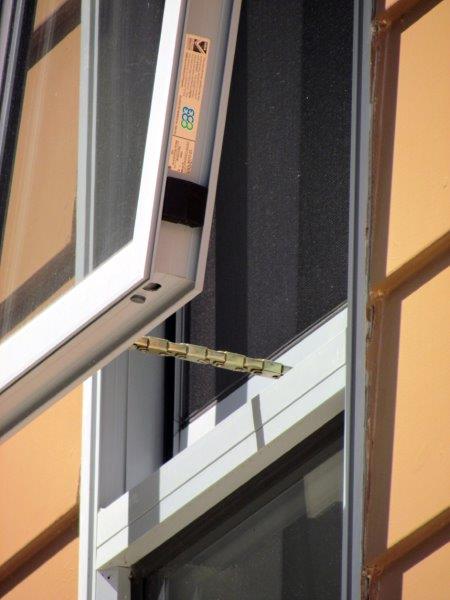
U Values - What's Watt
By EcoEco|March 20, 2017
U Values – What’s Watt
What's watts - where do they go? Single glazed aluminium windows let through 13 times more energy per square metre than an insulated brick veneer wall, so compared to bricks and mortar, windows are just holes in the wall which allow heat to move via conduction from the hot side to the cold side. And windows may as well be plugged into your power point going by the amount of watts it takes to replace the energy that flies out of them. The amount of heat they allow through can be predicted in a measure called window U value (Uw or U factor). Caution, don't be fooled by advertised U values for glass only, it is the whole window you are buying. Also be sure that the window you intend to buy is the window Uw you need.
The U value of a window measures energy loss in watts per square metre per degree Celsius passing through the window, which of course shows up in your power or gas bill just like the watts of your electric kettle or iron! (A kilowatt is 1,000 watts). If a house was perfectly insulated it would require zero heating or cooling to maintain temperature equilibrium, so what we pay for in gas and electricity for heating and cooling is directly related to how much energy leaks into or out of our homes. The better a home is insulated, the less energy we need to keep our home at a comfortable temperature.
Windows play the biggest single part in the cost of energy in an otherwise insulated home. Like a leaky boat whose hull is watertight apart from a few holes - we must bail the water at a rate that is equal to the rate of the leak or the boat will sink; so too with windows and doors, we must counter the heat lost or gained by our windows by turning on the heating or cooling to remain comfortable. Since a window’s Uw value is a measure of the window’s ability to conduct heat, then the lower the Uw value the higher its insulation or heat stopping properties. For Uw value, lowest is best.
If we compare two windows, a single glazed window with a Uw value of say 7 and a double glazed window with a Uw value of 3.5, then the window with the Uw value of 3.5 stops 50% more heat from being conducted through the whole window and requires 50% less energy to maintain the comfort level compared to the window with the Uw value of 7, that is 50% less in your heating or cooling bill for that window (looking only at windows in relation to energy).
Everyone knows that generally, double glazing is a better insulator than single glazing. But how much better depends upon design and the type of glazing. Poorly designed double glazed windows can perform worse than well designed single glazed windows where energy is concerned and double glazed windows vary enormously in energy efficiency terms.
Heating & cooling can be half your energy bill. On a cold (or Hot!!) day, poorly designed single glazed windows (U value say 7 or more) can draw around 6 kilowatts per hour of energy to maintain comfort for an average 2 storey home.
Choose windows wisely!! Windows are plugged in and switched on 24 hours a day - not like the dishwasher, and you can't switch them off!!.
Ed Stelling
ed @ EcoEco.com.au
What's watts - where do they go? Single glazed aluminium windows let through 13 times more energy per square metre than an insulated brick veneer wall, so compared to bricks and mortar, windows are just holes in the wall which allow heat to move via conduction from the hot side to the cold side. And windows may as well be plugged into your power point going by the amount of watts it takes to replace the energy that flies out of them. The amount of heat they allow through can be predicted in a measure called window U value (Uw or U factor). Caution, don't be fooled by advertised U values for glass only, it is the whole window you are buying. Also be sure that the window you intend to buy is the window Uw you need.
The U value of a window measures energy loss in watts per square metre per degree Celsius passing through the window, which of course shows up in your power or gas bill just like the watts of your electric kettle or iron! (A kilowatt is 1,000 watts). If a house was perfectly insulated it would require zero heating or cooling to maintain temperature equilibrium, so what we pay for in gas and electricity for heating and cooling is directly related to how much energy leaks into or out of our homes. The better a home is insulated, the less energy we need to keep our home at a comfortable temperature.
Windows play the biggest single part in the cost of energy in an otherwise insulated home. Like a leaky boat whose hull is watertight apart from a few holes - we must bail the water at a rate that is equal to the rate of the leak or the boat will sink; so too with windows and doors, we must counter the heat lost or gained by our windows by turning on the heating or cooling to remain comfortable. Since a window’s Uw value is a measure of the window’s ability to conduct heat, then the lower the Uw value the higher its insulation or heat stopping properties. For Uw value, lowest is best.
If we compare two windows, a single glazed window with a Uw value of say 7 and a double glazed window with a Uw value of 3.5, then the window with the Uw value of 3.5 stops 50% more heat from being conducted through the whole window and requires 50% less energy to maintain the comfort level compared to the window with the Uw value of 7, that is 50% less in your heating or cooling bill for that window (looking only at windows in relation to energy).
Everyone knows that generally, double glazing is a better insulator than single glazing. But how much better depends upon design and the type of glazing. Poorly designed double glazed windows can perform worse than well designed single glazed windows where energy is concerned and double glazed windows vary enormously in energy efficiency terms.
Heating & cooling can be half your energy bill. On a cold (or Hot!!) day, poorly designed single glazed windows (U value say 7 or more) can draw around 6 kilowatts per hour of energy to maintain comfort for an average 2 storey home.
Choose windows wisely!! Windows are plugged in and switched on 24 hours a day - not like the dishwasher, and you can't switch them off!!.
Ed Stelling
ed @ EcoEco.com.au



